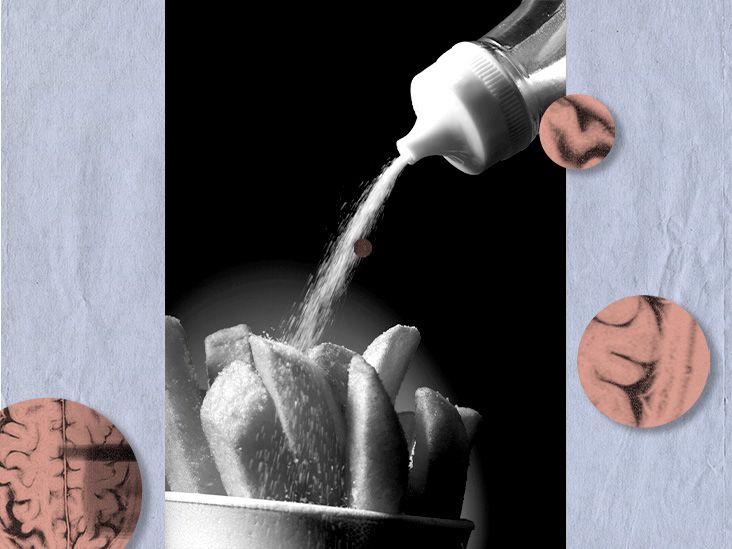Pain in the latissimus dorsi, or lats, can occur due to overuse. It may also result from improper technique in sports or other activities. Several exercises and stretches may help relieve lat pain.
The latissimus dorsi is a large, flat muscle covering the width of the middle and lower back. It connects the bone of the upper arm to the spine and the hip.
People often use this muscle during upper body exercise or movements that involve reaching the arms overhead or behind. Doing this repetitively or excessively could cause a strain or sprain.
Read on to learn more about latissimus dorsi pain and stretches that may help.

The main symptom of latissimus dorsi pain is discomfort or pain in the lat muscles, which span each side of the back. The pain may only present on one or both sides.
Because the lats
The muscle may feel tender to touch. It may also worsen when a person uses the muscle. Lat pain may worsen when the person extends their hands out in front of them, raises their hands above their head, or throws an object.
In some cases, the pain may radiate to surrounding muscles or cause other symptoms, such as:
- tingling in the arms
- tendinitis in the middle and lower back
- tightness around the chest
Anyone who suspects they have a lat injury needs to speak with a doctor for an assessment. Because the lats are large muscles and connect to many others, it is easy to confuse pain in this muscle for other injuries or health problems.
A doctor can check which parts of the body the injury affected and the extent of the damage. They will also be able to recommend a treatment strategy.
Some injuries may not heal without proper treatment. Trying to stretch the muscle too soon could also make it worse.
A person needs to seek immediate medical attention if:
- there was a popping, tearing, or cracking sound or sensation when the injury occurred
- the pain is severe or getting worse
- the injured part of the body has changed shape
- there is a large amount of swelling or bruising
- the skin around the injury has changed color, becoming blue, gray, or pale
- the skin is usually hot or cold to the touch
- they also have a fever
- they experience difficulty breathing
These could be symptoms of a more severe condition.
The latissimus dorsi muscle has many functions. It helps the chest expand during breathing and assists with many upper body or arm movements, such as:
- pushing
- throwing
- rowing
- bench presses and push-ups
- pull-ups
The lats may hurt if a person overuses them, exercises without warming up first, or uses improper technique.
A person may be at greater risk of injury if they:
- have misaligned posture
- have a job or hobby that requires frequent reaching overhead, such as air cabin crew
- take part in sports that involve throwing, rowing, or pushing with the arms
Examples of activities that may involve these movements include:
- baseball
- golf
- rowing
- weightlifting
- skiing
- swimming
- tennis
People with muscle strain in the latissimus dorsi may need to rest the muscle before they continue with exercises or other activities that may worsen the pain.
An older 2016 study mentions some case studies where athletes had to wait before resuming their sports because of lat strains.
Minor injuries may get better fairly quickly, with some athletes returning to play in 5 or 7 days. However, more severe injuries, such as tears, may require much longer periods of rest and recovery.
A doctor may also suggest:
- over-the-counter pain medications
- hot or cold therapy
- compression with bandages
People with persistent pain may need physical therapy.
Certain stretches may ease pain associated with the latissimus dorsi, while others strengthen the muscle to prevent further injury.
It is essential that a person consult a healthcare expert, such as a doctor or physical therapist, to ensure that the exercises are right for them and that they are using the correct form.
A doctor can recommend how often to perform these exercises. A person always needs to avoid performing an exercise that is painful or too uncomfortable.
Child’s pose
This yoga pose can stretch the back. To try it:
- On a yoga mat, begin on all fours.
- Bend the knees and lower the torso over the thighs, keeping the arms extended in front.
- Rest with the chest against the thighs and the forehead on the floor. Alternatively, rest the head on a block or cushion or hug the knees and rest the head on their forearms.
- Breathe deeply in and out, holding the stretch for as long as feels comfortable.
Kneeling bench lat stretch
To do this exercise:
- Kneel on the floor in front of a bench or sturdy elevated surface.
- Place the hands on the bench or surface and walk them forward until the arms are fully extended.
- Lower the chest toward the ground while keeping the arms straight. Keep the head in a neutral position.
- Hold for 20 to 30 seconds, breathing deeply throughout.
- Come back to a kneeling position.
- Take a break and then repeat for several sets.
Bridge pose
This pose can strengthen the back. To perform this exercise:
- Lay flat on the back with the arms at the sides.
- Bend the knees so that the heels are closer to the buttocks.
- Push the pelvis toward the ceiling and hold for 10 seconds.
- Slowly lower it to the floor, keeping the hands and feet in place.
- Repeat.
Banded one arm lat pulldown
This exercise can strengthen the back and requires a resistance band or similar equipment, such as a bungee cord. To try it:
- Stand up and hold the resistance band in both hands.
- Raise the arms above the head.
- Keeping one arm straight, pull the resistance band downward with the other arm, then bring the arm back up.
- Repeat on the other side, keeping the opposite arm straight and pulling the other downward.
- Aim for 10 repetitions with each arm.
Some strengthening exercises such as these may not be suitable for people with lat pain or injuries that are still healing.
It is not always possible to prevent muscle strains, but a person can reduce the risk by:
- warming up and cooling down before and after a workout
- using proper form during sports and exercise
- avoiding overuse of the muscle, where possible
- taking breaks and avoiding exercising with tired muscles
The latissimus dorsi is one of the largest muscles in the back. It can become injured with overuse or when a person does not use the correct form while exercising.
In many cases, latissimus dorsi pain will go away with rest. When it is safe to do so, stretching or strengthening the muscle may help prevent future injuries.
Consult a doctor if a person may have an injury in this muscle, especially if it occurs suddenly, causes other symptoms, or the pain is severe.

